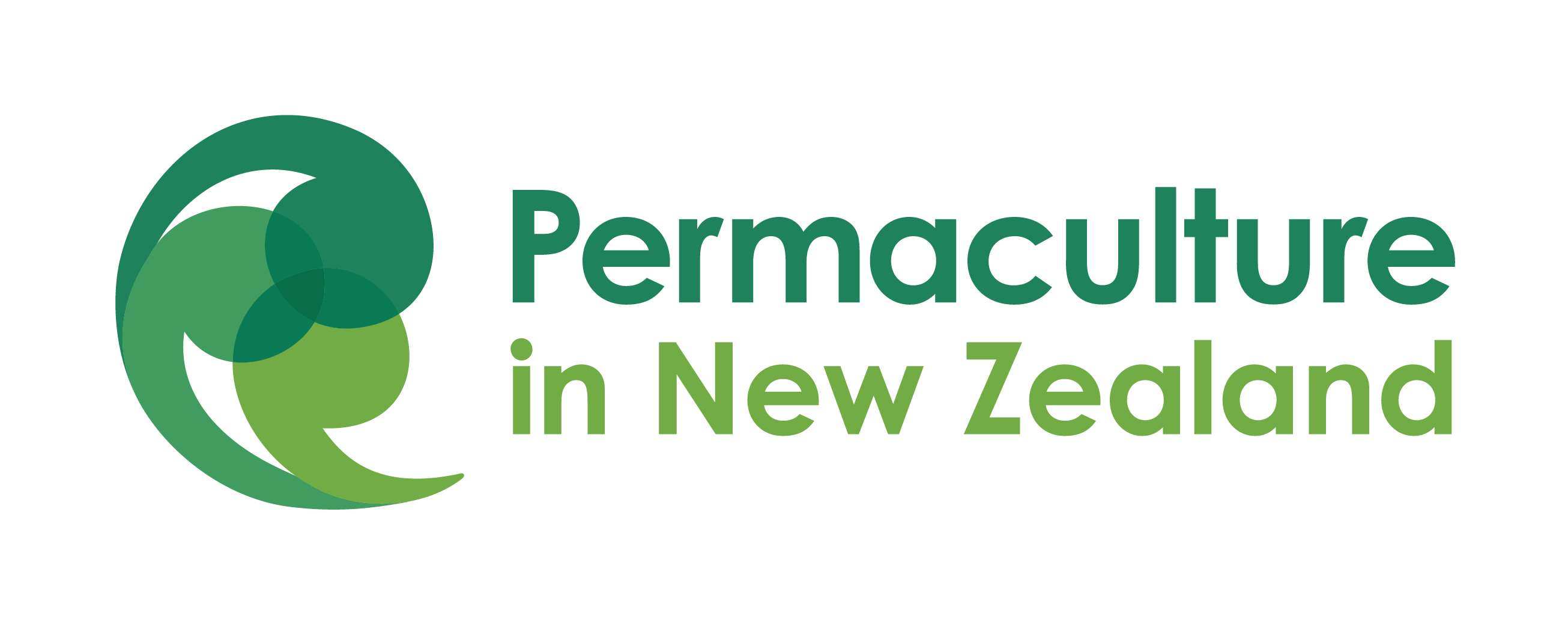 |
| Kia ora koutou Permaculture Whanau. With the range of projects we are looking to undertake as part of our ‘Whakaoho’ /Reawakening (which you can read more about in our March Newsletter or on Facebook) the council have co-opted on two additional council members since the AGM. Nick Ratcliffe and Belinda Bidois bring some fantastic skills and energy to the PiNZ Council and will help us ensure that we achieve the goals we have set ourselves. With the formation of the new council we have each taken on different areas to oversee putting our diverse skills to use, and Merve has taken on production of the newsletter. As the newsletter is one of our primary modes of communication with our membership and the wider permaculture community, at the start of the year we moved to a monthly newsletter to ensure more regular updates. Merve is investigating a new format to ensure that our newsletter is not only delivering quality information, but that it is something that you look forward to receiving and is enjoyable to read. So over the next few months please be patient as we test and refine our new look newsletter, but for now take a few moments to engage with the Permaculture Principle that Merve is highlighting as you read this month’s newsletter. Nga Mihi Nui Fiona Moorhouse Chairperson Permaculture in New Zealand Inspiring Permaculture thinking and activities Dear readers, I came to my role in PiNZ back in December, since then I have been brewing ideas to create and share a newsletter that makes Permaculture stronger in New Zealand by sharing stories, information, events etc. While I was reading David’s Holmgren’s Essence of Permaculture Handbook, it struck me! Going back to each principle is the best way to inspire Permaculture thinking and activities. So here it is, each month’s newsletter will have a permaculture principle and a field example of different areas Permaculture can be applied to. Holmgren arranged the diversity of permaculture into 12 principles. Each principle gives us insight into systems thinking. This is a holistic approach that works with how things influence each other as part of a whole. .jpg) OBSERVE & INTERACT ‘Beauty is in the eye of beholder’. The first principle is the main pillar of permaculture thinking in my opinion. With the increasing popularity of mindfulness practices in our modern society, we are almost always reminded of the importance of taking a moment to observe before interacting with our surroundings and social circles. When we think in terms of nature, we see that everything in nature survives and thrives by constantly observing and interacting with their environment. As humans, we are also affected by natural laws and cycles; meaning careful observation and thoughtful interaction provide the insights that are necessary later in creating an appropriate response. I like to think in ways how each principle also can be applied to our social lifes as much as designing landscapes. When we are present without judgments and only to observe what already exists (patterns, cycles, behaviors), rather than an imposition of our views; this principle becomes a valuable tool to set ourselves for success and in many ways an easier/happier life. This principle is also about seeing issues in a creative way using a holistic approach. The problem is the solution reminds us to stay playful towards a challenge and come up with creative ways to deal with obstacles. SEED SAVING As the winter gets closer, we can observe that many annual plants finish their cycle, making it a good time to save the favorite seeds of summer. Seed saving is important and beneficial in ways that will increase our resilience and self sufficiently. The seeds adapt to the environment in which they grew, they are strong against pests and diseases, and even absorb nutrients from a particular type of soil. The seeds become more in tune with the environment they have been, through different generations of adapting.  In some ways; they also become attuned to our bodies through sharing the same environment. It is known that we coevolved with seeds and trees and they are directly linked to our gut microbiome. Koanga Institute ( https://koanga.org.nz/) does amazing mahi in saving heritage seeds and trees. When we have our own seed stock, we also ensure there will be crops. In a world of emerging challenges seeds ensure we will feed ourselves. There is an amazing documentary about Vandana Shiva, a physicist and activist who defends the environment and diversity through saving seeds. She has created seed banks that may one day save future generations’ food sovereignty. Read more here Watch The seeds of Vandana Shiva documentary trailer here Arohanui, Merve Yeşilkır Events Coming up this month our members are holding events around the country. Head over to our website and check out what is being offered in your local area. If you are a member and have an event coming up that you would like to promote on the website, please get in touch by emailing Permaculture In New Zealand. Check out these events across the country… Connect with Us: Facebook Contact Info: Email: info@permaculture.org.nz You receive this because you have expressed an interest in PiNZ in the past. If you have let you membership lapse then you can renew at your profile page. If you want to join PiNZ then go to https://permaculture.org.nz/join-membership |
| Permaculture in New Zealand (Inc) c/- PO Box 173 Matakana, 0948 New Zealand|Unsubscribe | Subscribe | Opt out |
